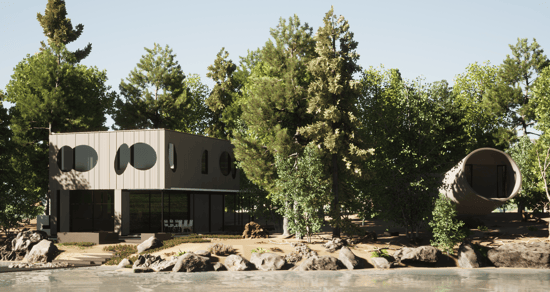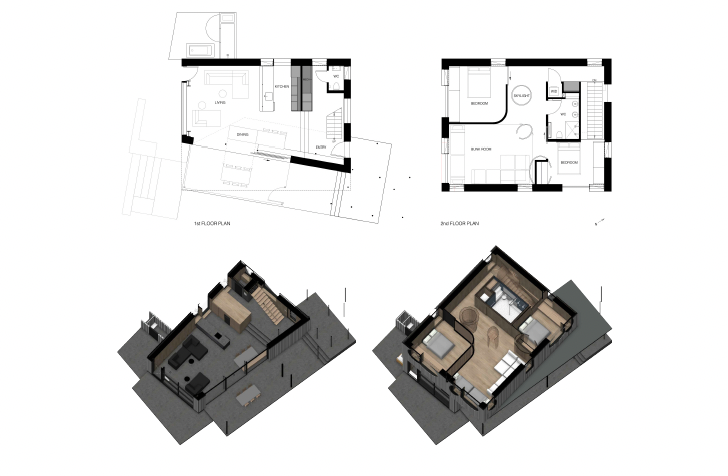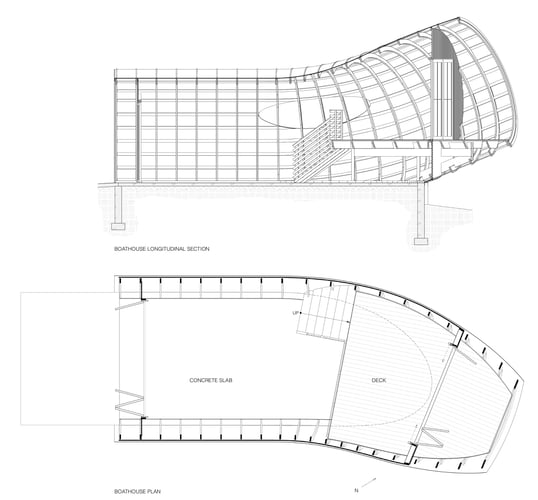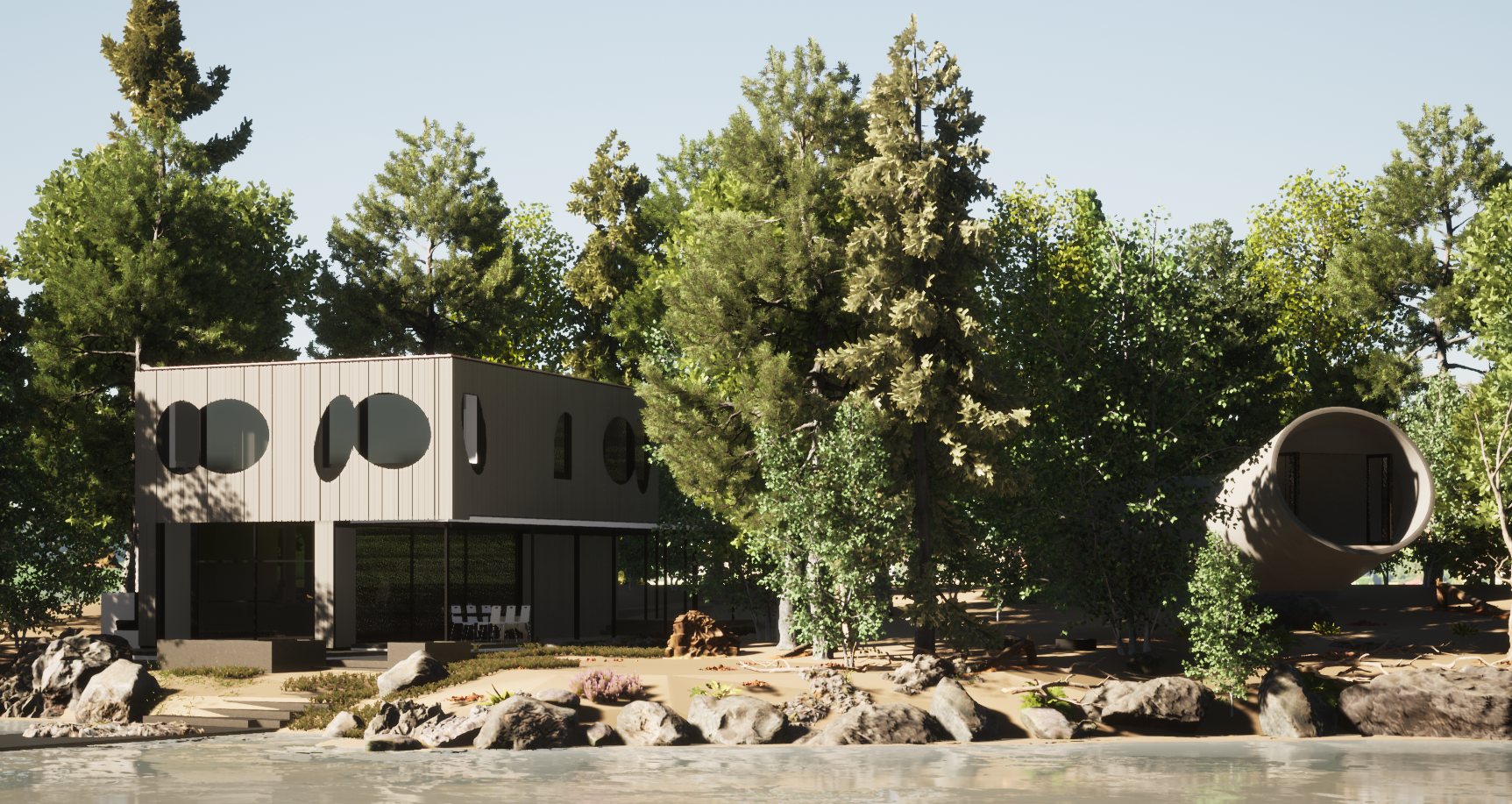With so much innovation happening in sustainable architecture these days, let’s look at how one firm is using BIM to produce sustainable projects that are stunning to boot.
Alchemy Architects, based in Saint Paul, Minnesota, champion sustainability for all their projects, and incorporate energy-efficient architecture in some inspiring ways. Their weeHouse system is the hallmark — Alchemy’s weeHouses are “flexible, pre-designed modular systems, leveraging modular factories around the country to create dwellings from 300 to 3,000 square feet.”
Using Vectorworks, Alchemy Architects designed and delivered a custom design inspired by the weeHouse philosophy. This post will explore that project and how Building Information Modeling (BIM) is essential to the project’s success, how algorithms-aided design and the Marionette toolset in Vectorworks led to workflow efficiency, and how Alchemy leveraged Passivhaus principles to deliver a sustainable project with reduced costs.

Hear from Alchemy Architects about how they designed the Squam Lake House in a case study with principal Geoffrey Warner, FAIA, and architect Eric Winter, AIA.
BIM Puts Sustainable Targets in Reach
Building Information Modeling (BIM) helped Alchemy Architects create an accurate 3D model filled with information such as material costs and transportation requirements.

Modeling the project in the early design phases meant it was easier for Alchemy to source the required materials well ahead of construction time. By planning in this way, Alchemy could source materials locally, which reduces the project’s overall embodied carbon emission levels by means of reduced transportation costs.
WORKING ON A SENSITIVE, REMOTE SITE
With a traditional architectural workflow, complications arise when working on a distant site that’s sensitive to vehicles and construction equipment. BIM provided an effective way to mitigate these circumstances.
.png?width=724&height=500&name=Existing%20Site%20(webinar).png)
Alchemy created a virtual representation using Vectorworks Architect, which allowed them to sort out design issues and predict construction processes before even setting foot on the site. Having accurate, detailed geometry also allowed the firm to confidently prefabricate building elements, which reduces onsite construction time.

AUTOMATION & ALGORITHMS-AIDED DESIGN TO CREATE FREEFORM OBJECTS
What stands out about Alchemy’s Squam Lake Boathouse is its complex, curvilinear shapes. Alchemy accomplished their fluid shapes by starting with basic concept models and using graphical scripting to give them their distinct form. They were also able to model construction details within Vectorworks. The image below shows their process.

First, they created a basic cylindrical shape and tapered it closer to the desired final shape. Then the magic happened — using Marionette, Vectorworks’ algorithms-aided design module, they crafted a script using pre-made nodes. Running the script then transformed the basic tapered extrude into what’s shown in the bottom left of the image above: a piece of geometry that would’ve taken ages to model otherwise.
.png?width=800&height=486&name=Custom%20Modeled%20Elements%20(webinar).png)
Read more about Marionette here and watch an in-depth webinar about the program here.
USING BIM FOR PASSIVHAUS OBJECTIVES
Passivhaus, the process of deliberately planning to increase a structure’s energy efficiency through practices such as natural heating, cooling, and ventilation, guides how Alchemy designs their projects.
Passivhaus also has a lot to do with material choices and quality of construction methods. The building standard can lead to 75% energy savings compared to average new builds, according to passivehouse.com.
However, some perceive Passivhaus design to be economically unviable. While it’s certainly true that taking advantage of the sun and natural climate as well as other Passivhaus methods can come with a price tag, typically that cost is associated with project timelines and level of effort.
For Alchemy, BIM is a way to mitigate those costs. Alongside graphical scripting, the firm saved a significant amount of time compared to traditional workflows, making Passivhaus not only economically viable, but beneficial for both the client and the environment.
All images courtesy of Alchemy Architects.

.svg)





